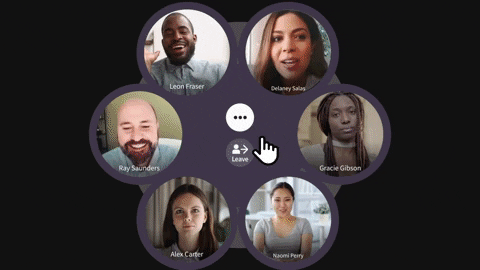Virtual Workspace: Bring Flexibility to your Office

Paul Murphy
2021.06.28
3 min read

We used to have physical workspaces. When a parent told a child “I’m going to work”, it was understood that he or she would be leaving the house.
That’s no longer true.
Today, many of us work in “virtual” workspaces, workspaces that are accessible from anywhere. Today, the laptop class can go to work without leaving the house.
What is a workspace?

Depends who you ask.
For a lot of people it’s an office, a factory, a field, a restaurant, a hospital, or even a vehicle. People work in lots of places.
For a lot of people, where they work hasn’t changed and won’t change. But for many white collar workers, workers who mostly work at their desks, things are changing, and the recent string of lockdowns has accelerated this change.
These workers interact with the world through four interfaces:
- other humans,
- paper,
- telephones, and
- computers.
Until recently – a couple of decades ago – most of those things weren’t mobile. Today they all are, and this has very profound implications on the flexibility of these people’s workspace.
Paper, although it still exists, has been virtualized, i.e., digitized. Sure, we still see lots of papers in offices, but it’s no longer necessary. I still know people who print their emails, but I personally haven’t owned a printer in 15 years.
Telephones are no longer attached to walls.
Computers are portable.
And humans are just as accessible through a video conference as they are in person.
Today, a white collar worker is no longer bound to a workplace. He or she can work from anywhere: a traditional office, a shared workspace, a home, a boat, or even a beach. I’m writing this blog from a beach house in Southern Italy. I could just as well be in the mountains in France, or an office in New York.
So if a workspace has already been virtualized, what do we mean by virtual alternatives? That’s an interesting question.
What are the virtual alternatives

When I work, some things I interact with – people and paper – have been virtualized, and others – telephones and computers – have been made portable. But I don’t work in a virtual workspace, I work virtually, in different places.
I work virtually, in whatever space I happen to be.
So what is a virtual workspace?
It’s an attempt to recreate a physical office environment digitally. In this space you can bump into colleagues, you can have lunch together, you can meet and share a whiteboard, etc. It’s just like being in the office with your colleagues.
As much as I like working virtually from anywhere, I sometimes miss working with people in a shared space. Needless to say, I’m not alone. A lot of people miss being together with their colleagues. And of course, when there’s a need, the boffins try to address it. We’re addressing it in two ways:
- what I call, real virtual workspaces, using VR, and
- light virtual workspaces, using more traditional tools.
Let’s dig into those.
When designers recreate something digitally they frequently use a representation of a physical analog in order to make the transition from the physical to the virtual as intuitive as possible. Here’s an example. When you delete a file from your computer, do you put it in a trash can? Right. That works, even though we all know it’s an analogy.
If sticking to physical analogs is your design approach, you are aiming to create real virtual workspaces, i.e., virtual spaces in which desks look like desks and people who look like people. In these spaces you can “walk” from your desk to a meeting room, or into someone else’s office. In order to simulate all those things, you need VR. You need to strap goggles onto your face, and get to work.
I’ve done it. It’s kind of cool. It’s great for discussions and it’s great for watching media together. But it’s beyond terrible for working on a spreadsheet or for writing email. Keyboards in VR are a bit of a joke. Until we really nail voice interfaces or haptic gloves, I won’t be spending my days in a “realistic” virtual office.
Now, let’s talk about lighter weight virtual workspaces.
Sometimes we don’t need a perfect analogue to create a useful digital alternative. My favorite example is Slack. An office facilitates communication. And so does Slack, even though they aren’t remotely similar. Of course an office enables many richer interactions, but they aren’t always necessary. And Slack automatically saves context in a way that isn’t possible when conversations are in person.
Slack, and other collaborative tools are able to replicate in-person workspace functions without simulating an office environment the way we do in VR.
How does Toucan support virtual workspaces?

In offices people don’t just talk to each other in conference rooms. They stop by each other’s desks, chat in the hall, sit down for lunch together, and sometimes even leave the office for a breath of fresh air and a private chat.
Traditional video conferencing tools, like Zoom, are excellent digital analogues to conference rooms, but they don’t allow casual connections in different places across time. Toucan does.
In a Toucan Space two people can get together for a quick sync, either personal or professional. Or a group of co-workers can get together to polish a shared document. Or the entire company can meet – in conference mode – to watch a presentation by the HR team about upcoming benefit changes. All of these modes of interaction are possible in Toucan without ever leaving the Space, because Toucan lets people move around and interact with any other person in a Space at any time. Like Slack, a Toucan Space facilitates communication, but it goes much farther. Without trying to recreate an office environment literally, Toucan enables the many types of in-person office interactions.
All that without strapping a big headset onto your face.
See Toucan in action without having to register
About author

Paul Murphy
Toucan co-founder.
Rabbi, driving instructor, and acrobat in parallel universes.
Go back to blog
© 2024 Toucan Events Inc. All rights reserved.
